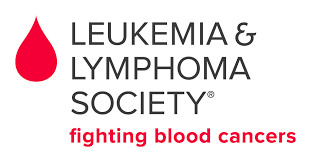In order to diagnose Non-Hodgkin Lymphoma (NHL), your doctor will usually perform a lymph node biopsy. If the biopsy confirms that you have the disease, your doctor will perform additional testing to stage the lymphoma, determine its subtype and develop a treatment plan.
After your doctor takes a biopsy of your lymph node and lymph tissues, your sample will be sent to a specialist who studies blood cell diseases, known as a hematopathologist, who will examine your cells under a microscope to look for biological signs of NHL. If the cells are characteristic of NHL, your hematopathologist will confirm your diagnosis and identify the NHL subtype.
In the lab, the hematopathologist will use one or more of the following lab tests to examine your cells:
- Immunophenotyping confirms an NHL diagnosis and identifies the cancerous lymphocytes as B cells, T cells or NK cells.
- Cytogenetic analysis looks for chromosome changes. The abnormalities help determine the NHL subtype.
- Gene expression profiling and microarray analysis identify the NHL subtype and its risk factors. They can help predict response to treatment and identify patients who could be at high risk for relapse.
- Polymerase chain reaction (PCR) analyzes certain genes to help predict response to treatment. This test is also used to screen for residual lymphoma cells too small to be seen under a microscope.
Once your doctor confirms an NHL diagnosis, he or she runs more tests to identify the extent of your disease and where the disease is located in your body. This is called staging the disease and it involves a physical exam and tests such as imaging (radiology) studies, blood tests and a bone marrow test.
Imaging tests (also called diagnostic radiology) are conducted along with a physical exams in order look for:
- Where the enlarged lymph nodes are located and how they are distributed
- The effects of the disease upon other organs such as the lungs or liver
- Large tumor masses
Imaging tests may include an X-ray of the chest, a CT scan of the neck, chest, abdomen and pelvis, an MRI scan, a positron emission tomography or PET scan, or a fluorodeoxyglucose PET r (FDG-PET) scan of the entire body with a radioactive tracer.
After your blood is drawn, it is sent to a lab for a complete blood count (CBC) and other studies. In the lab, your blood is tested for:
- Red blood cell, white blood cell and platelet levels
- The presence of lymphoma cells
- Abnormal or lack of Immunoglobulins (produced by lymphocytes)
- Levels of blood protein
- Levels of uric acid
- Erythrocyte sedimentation rate (the speed that red cells settle at the bottom of a test tube - an increased rate can indicate cancer)
- Function of the liver and kidney
- Evidence of hepatitis A or B
- The biological markers lactate dehydrogenase (LDH) and beta 2-microglobulin
Your physician might decide to conduct a bone marrow examination to see whether the disease has spread. You may not need this test if your disease is at an early stage and/or if some symptoms are not present.
Bone marrow testing involves two steps performed simultaneously in a physician's office or hospital. The first step is a bone marrow aspiration (performed to remove a liquid marrow sample) and the second step is a bone marrow biopsy (performed to remove a small portion of bone filled with marrow). Your doctor may choose to also take bone marrow samples during your treatment to assess your response to therapy.
Certain tests are not necessary for every patient with NHL, as some tests are only performed to screen for specific subtypes.
NHL Subtypes
Non-Hodgkin Lymphoma (NHL) has approximately 60 subtypes. Your NHL subtype is very important in determining the best type of treatment for you.
The two main subtype categories are:
- B-cell lymphoma
- T-cell and natural killer (NK) cell lymphoma
Eighty-five percent of NHL patients’ cancer originates in the B-cell lymphocyte (B-cell lymphoma). The most common subtype of B-cell lymphoma is diffuse large B-cell lymphoma (DLBCL), as 30 percent of all NHL patients in the United States have this type.
A small number of patients have a type of NHL in a third category, known as immunodeficiency-associated lymphoproliferative disorders.
Doctors classify the subtypes of NHL into two categories that describe how quickly or slowly the disease is progressing:
- Aggressive NHL, also known as fast-growing or high-grade, makes up 60 percent of NHL cases in the United States. The most common aggressive subtype is diffuse large B-cell lymphoma.
- Indolent NHL, also known as slow-growing or low-grade, makes up 40 percent of NHL cases in the United States. The most common indolent subtype is called follicular lymphoma.
Some patients have "intermediate grade" disease, which develops at an intermediate speed between indolent and aggressive. In some cases, indolent NHL can "transform" into aggressive NHL by progressing through intermediate grade.
To learn more, visit The Leukemia and Lymphoma Society.
 Content provided by:
Content provided by: